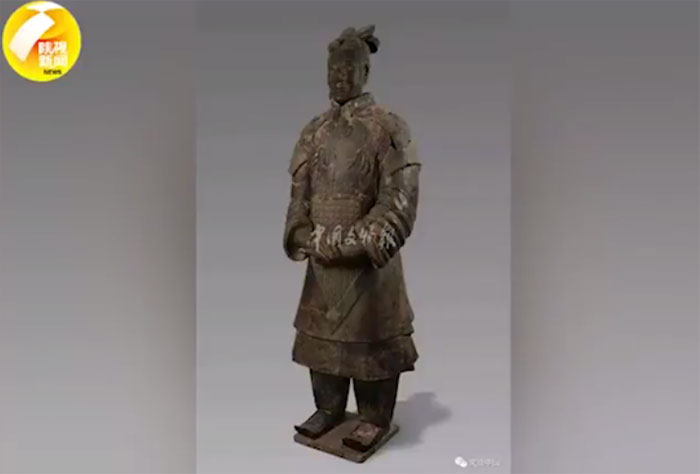Detecting a concussion about the terracotta army in the tomb of Qin Shi Huang
Chinese archaeologists found 220 more terracotta warriors during the excavation of the tomb of the first Emperor of the Qin Dynasty.
The tomb has been excavated and researched since 2009, on an area of about 500,000 square meters. Archaeologists have found a range of artifacts made of pottery, copper, jade, small amounts of gold, silver, and iron and the above terracotta warriors.

A new terracotta warrior was found in the tomb of Qin Shi Huang.
Most of the artifacts are in good condition, including military tripods, crossbows, gold swords and daily items such as spoons, plates, wine barrels and teapots. The researchers also discovered a gold camel, believed to be the earliest camel-shaped artifact in Chinese history.
Further research on these artifacts could provide important information about trade between China and Western countries before the time of the Silk Road.
As mentioned, besides 220 ceramic statues, archaeologists have discovered 12 more ceramic horses, as well as a large number of weapons and architectural monuments belonging to military officers seen before in the tomb of Qin Shihuang.
These findings may force us to rethink our previous understanding of how the military was organized in the Qin Dynasty.
About 220 terracotta warriors were discovered in the tomb of Qin Shihuang (Video: Global Times).
- Video: The process of making terracotta army of Qin Thuy Hoang
- New discovery of terracotta army in the tomb of Qin Shi Huang
- New discovery of terracotta army in the tomb of Qin Shihuang
- The deadly weapon of the terracotta army, the tomb of Qin Shi Huang
- New theory about terracotta army Qin Shihuang
- The mystery of the tomb Qin Shihuang
- Discovered the terracotta army protecting the tomb of Han's son
- The sophisticated weapon of the terracotta army in the tomb of Qin Shihuang
- Why hasn't China dared to excavate the tomb of Qin Shui Huang?
- Video: The army escorts Qin Shihuang to death
- China suspended excavation of the tomb of Qin Shi Huang
- Artists build terracotta army Qin Shihuang used to eat dog meat
- Excavating the tomb of Qin Shui Huang, discovering the animal world inside
- Video: Qin Shihuang's process of making terracotta army
 Discovered an ancient centipede fossil 99 million years old
Discovered an ancient centipede fossil 99 million years old Discovered bat-like dinosaurs in China
Discovered bat-like dinosaurs in China Discovered a 200-year-old bronze cannon of the coast
Discovered a 200-year-old bronze cannon of the coast Discover 305 million-year-old spider fossils
Discover 305 million-year-old spider fossils